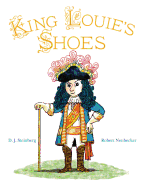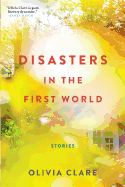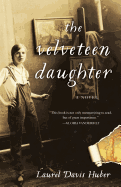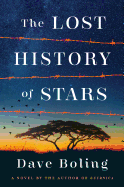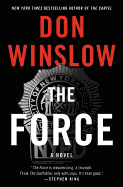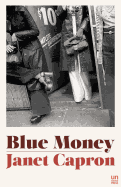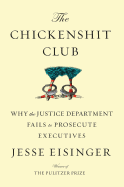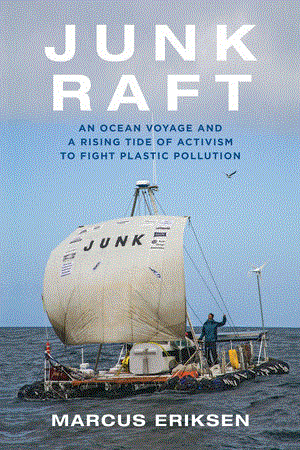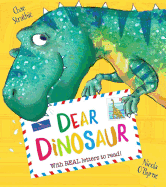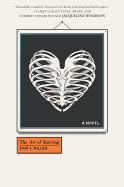Week of Friday, July 14, 2017
 |
|
| photo: Kathy Huang | |
Is it possible to change lives with words? Michelle Kuo, author of Reading with Patrick (reviewed below), believed so when, at the age of 22, she set out to teach in the Mississippi Delta. Armed with a degree from Harvard and a passion for the Civil Rights movement, Kuo felt sure she would find a city and its people eager for aid. The truth was something altogether different: "What had the Civil Rights Movement been for--the violence, the martyrs, the passionate actions--if its birthplace was still poor, still segregated, still in need of dramatic social change?"
Though daunted in the classroom, Kuo carried on, wondering if she'd ever manage to make a difference. She applied to law schools, convinced by college friends that she could "maximize" her impact with another degree. Eventually, she made strides with her students through writing, the star being Patrick Browning, a 15-year-old with a quiet, calm presence and a desire to learn. But the influence of Kuo's parents, Taiwanese immigrants, coupled with Kuo's own doubts over her effectiveness, led her to leave and pursue a law degree, eventually landing in California. Still, the Delta was never far from Kuo's mind. And when she heard that Patrick had killed a man, she returned--and stayed, visiting him every day in the almost two years leading up to his trial. They read together and, ultimately, connected in a way Kuo had always hoped for, but feared was impossible: "There were moments when I was reading with Patrick that he appeared to me anew...." "[T]here seemed to exist between us a mystical and radical and improbable equality. This was what reading could do: It could make you, however fleetingly, unpredictable. You were not someone about whom another can say, You are this kind of person, but rather a person for whom nothing is predetermined." Ultimately, Kuo learned it is possible to change lives with words. Maybe not in the precise way one would expect or hope, but change nonetheless. --Stefanie Hargreaves, editor, Shelf Awareness for Readers
Still, the Delta was never far from Kuo's mind. And when she heard that Patrick had killed a man, she returned--and stayed, visiting him every day in the almost two years leading up to his trial. They read together and, ultimately, connected in a way Kuo had always hoped for, but feared was impossible: "There were moments when I was reading with Patrick that he appeared to me anew...." "[T]here seemed to exist between us a mystical and radical and improbable equality. This was what reading could do: It could make you, however fleetingly, unpredictable. You were not someone about whom another can say, You are this kind of person, but rather a person for whom nothing is predetermined." Ultimately, Kuo learned it is possible to change lives with words. Maybe not in the precise way one would expect or hope, but change nonetheless. --Stefanie Hargreaves, editor, Shelf Awareness for Readers
The Velveteen Daughter
by Laurel Davis Huber
In this beautiful novel, Laurel Davis Huber's brilliant writing elegantly captures the complicated lives of two artistic women: author Margery Williams Bianco, who most famously wrote The Velveteen Rabbit, and Pamela, her troubled daughter. The girl, a child prodigy, had her art displayed in galleries in Italy, England and the United States before she was out of her teens. But this early success and ability wreaked havoc on Pamela's psyche, and she struggled throughout her life with depression.
The Velveteen Daughter opens on September 1, 1944, when a distraught Pamela arrives unexpectedly at Margery's New York apartment with her son Lorenzo in tow. Margery makes Lorenzo breakfast, and Pamela goes to lie down; both women separately reflect on the years that led them to this breaking point. Slowly, through a series of flashbacks, the reader learns of Margery's hesitation to display Pamela's talent, overruled by her husband, Francesco. Pamela had an unrequited love affair with the author Richard Hughes, and expressed disgust at her cousin Agnes's marriage to Eugene O'Neill, which both played roles in her own failed marriage.
Huber delicately portrays how each woman longs to reach out to the other, and yet is unable to, trapped in a terrible cycle of love and hesitation. Beautifully written, heartbreakingly captivating and full of literary and artistic magic from the early 20th century, The Velveteen Daughter is sure to appeal to fans of Margery's classic, and to anyone who has struggled to understand their parents or their children. --Jessica Howard, blogger at Quirky Bookworm
Discover: This wonderful and tragic novel tells of the real relationship of Margery Williams Bianco, author of The Velveteen Rabbit, and her daughter Pamela.
The Lost History of Stars
by Dave Boling
Fourteen-year-old Lettie Venter--imprisoned in a British concentration camp in South Africa during the Anglo-Boer War--treasures memories of happier days, like stargazing with her grandfather. Now, the men in her family are fighting the British for their land, settled by her Dutch forebears and now coveted for diamond and gold deposits. The Lost History of Stars is Lettie's heartbreaking coming-of-age story, and Dave Boling's (Guernica) unsparing prose portrays the tragedy of innocents caught in the horrors of war.
Lettie's first-person account, which reads like the journal she faithfully keeps, begins in 1900, the day "Tommies" ride into their yard, threaten her and her family, and ransack their farm. It happens quickly, yet agonizingly: "Half an hour by the clock... a week's worth of heartbeats... a lifetime's tears." When their crammed cart arrives at the concentration camp, children "were already sickened by a disease whose name I had never heard" after drinking from mud puddles on the arduous journey. The narrative then goes back a year, before the men in her family were called up to fight, followed by the months after their drafting, when women and children tended the farm.
Surrounded by starvation, sickness and death in the camp, Lettie is nevertheless a typical adolescent. She and her family exhibit bravery and tenacity throughout their tribulation. "It was only when everything was taken away that you got to see what was at your core." Lettie's coming of age in these horrific circumstances is a tribute to grit and family love. Dave Boling writes a historically accurate novel of war's innocent victims. --Cheryl Krocker McKeon, manager, Book Passage, San Francisco
Discover: A teenage girl narrates her experiences in a British concentration camp during the Boer War.
Disasters in the First World
by Olivia Clare
In Olivia Clare's lyrical and elegiac first short story collection, Disasters in the First World, the characters' mental health is examined with clear-eyed compassion. The excellent "Pétur" introduces Adam, who watches his mother behave in increasingly strange ways on a shared vacation to Iceland. At first he attributes her oddness to her free-spirit personality, but eventually, he learns the startling truth--that her behavior may have clinical roots. In "Olivia," another standout, the titular character mitigates her anxiety and depression by creating an "Asking place" in her guest bedroom; she visits daily to petition a greater power for happiness. When a young friend of her husband comes to stay with them for a few weeks, Olivia is at first dismayed at having to give up, even temporarily, her sanctuary. But she softens when she realizes that her guest's suffering might be even more debilitating than her own.
Clare's writing sparkles with unexpected word choice, a nod to her previous work, the poetry collection The 26-Hour Day. Her stories unfold in wonderfully astonishing turns. Despite their collective focus on mental breaking points, none offers a simplified diagnosis of a character's suffering. Instead, they reveal the multifaceted impact that mental illness can have on both the sufferer and their loved ones. Clare furthermore suggests that no one is completely defined by how well--or not--their brain functions. Tender yet occasionally biting, Disasters in the First World ekes narrative poetry out of tragedy. --Amy Brady, freelance writer and editor
Discover: In her first collection of short stories, poet Olivia Clare writes compassionately and unflinchingly about mental suffering.
Mystery & Thriller
She Rides Shotgun
by Jordan Harper
Jordan Harper's first novel, She Rides Shotgun, is a sanguinary crime novel with heart. Nate McClusky is an ex-con ("all muscles and dragons and gunfighter eyes") who gets crosswise with the Aryan Steel gang ("all the dirty whiteboys in California"). He shanked the brother of its leader Crazy Craig Hollington in his last days at Pelican Bay State Prison. Crazy Craig puts out a warrant to the Steel's gang network on the outside to execute Nate, his ex-wife and his 11-year-old daughter, Polly--a precocious kid with few friends and an odd attachment to a beat-up teddy bear. When Nate is released early, he picks up Polly at her Fontana middle school and scares her into taking off with him in his stolen car with a command: "You're coming with me. Right now, no time for fuss." And then they're off on a wild odyssey of violence, righteous retribution and father-daughter bonding.
A screenwriter for TV shows like Gotham and The Mentalist, Jordan first tapped into crime fiction with the story collection Love and Other Wounds. He knows how this game is played. Introspective, shy Polly grows up fast in the company of her crime-hardened father. In fits and starts, Nate cultivates the family connection he needs and wants. She Rides Shotgun is a True Grit sort of saga, but on hot-wired horsepower instead of horseback. With Harper's storytelling chops, it's a rolling hell-bent adventure with all the snappy dialogue and action of the best noir fiction. --Bruce Jacobs, founding partner, Watermark Books & Cafe, Wichita, Kan.
Discover: Harper's irresistible first novel tempers the brutality of crime with an empathetic story of an unlikely father-daughter alliance.
The Force
by Don Winslow
At the start of Don Winslow's The Force, New York Police Department "hero cop" Denny Malone is behind bars. How did he get there? Winslow takes readers through his descent step by step.
Detective Malone thinks of himself as king of Manhattan North. He heads up a special team called Da Force that can tackle cases without having to worry about departmental jurisdictional lines, because often crimes involve narcotics and guns and homicide. Over their 18 years on the job, Malone and his brothers in blue have slowly crossed their own lines--the ones between right and wrong. They rip off drug dealers, beat down child abusers, accept bribes--justifying it as street justice, doing wrong in order to do right. Until all they can do is wrong, and the only way Malone can make his way back is to do the unthinkable.
Like Da Force, Winslow is in command of his turf. He provides details that will make readers feel as though they're doing ride-alongs with these cops and being plunged into Manhattan's mean streets. He shows what it's like to be on the front lines and feel as if every day could be the last, to experience the high that comes with cheating death, to believe one might be invincible. What these cops go through--and become--isn't pretty, and readers may not like or forgive their actions. Winslow, however, reveals the abyss the members of Da Force have to gaze into in order to do their job, and how it's understandable that the abyss eventually gazes back. --Elyse Dinh-McCrillis, editor at The Edit Ninja
Discover: An elite NYPD task force slides into corruption in Don Winslow's immersive thriller.
Biography & Memoir
Reading with Patrick: A Teacher, a Student, and a Life-Changing Friendship
by Michelle Kuo
When Michelle Kuo graduated from Harvard in 2003, she joined Teach for America and went to Helena, Ark., a rural town in the heart of the Delta. She dreamed of galvanizing her students through black literature, believing that books could change lives. "It was unabashedly romantic." She chronicles her aspirations, and the hard reality she encountered, in Reading with Patrick: A Teacher, a Student, and a Life-Changing Friendship.
After failing to rouse her students with fiery prose from James Baldwin and Malcolm X, she found a hit with A Raisin in the Sun. She bought YA books for them; they began to guard them "like amulets." Patrick was 15, mild-mannered, and thrived under Kuo's attention. After two years teaching, she went to Harvard Law School; upon graduation, she heard that Patrick had been jailed for murder. Shocked, she turned down a law firm job, and went back to Helena for Patrick and what she considered unfinished business for both of them. They restarted their relationship reading The Lion, the Witch and the Wardrobe, and moved on to haikus, Tennyson, Mary Oliver and Frederick Douglass (for Patrick, "to keep reading was urgent--in fact, not a choice at all.") Every day Patrick wrote, every day they recited poems. He found his métier in writing letters to his young daughter, infused with poetry: "...a silver carp surfaces as if it is jewelry in the water." Both teacher and student evolved.
Tender and gritty, with reflections on race and justice and pedagogy, Reading with Patrick is a paean to literature, to caring and to Forster's maxim, "Only connect." --Marilyn Dahl
Discover: A recent university graduate goes to Arkansas to teach in a rural black school, where she forms an unexpected and life-changing bond with a student.
Daring to Drive: A Saudi Woman's Awakening
by Manal Al-Sharif
Saudi activist Manal al-Sharif is internationally known for her role in women's driving rights campaigns. Daring to Drive is a memoir of her life and her transformation from a fundamentalist teenager into a central member of the Saudi women's rights movement.
Al-Sharif grew up poor in Mecca. She was beaten regularly by her parents and teachers. Her Libyan mother insisted that she be genitally mutilated, but also that she be educated through college. Like many of her generation, she internalized the fundamentalism taught to her at school and forced it on her family. But she maintained her love of books and art, college broadened her views and September 11, 2001, "was the date of the complete transformation in my beliefs." After graduation, she went to work for the state-owned oil company Aramco, living and learning to drive inside its multinational, mixed-gender compound. She married and divorced, spent six months working in New Hampshire, went skydiving and took a solo vacation to Puerto Rico. When she turned 32, she joined a feminist driving rights group.
Al-Sharif writes gracefully with great openness and perception. She describes how the restrictions on women frustrate many Saudi men as well--with pointless and often cruel personal and monetary costs--and how Saudi Arabia's repressive rules and acceptance of violence poison both public and private life. Nevertheless, Al-Sharif conveys her love of Saudi Arabia despite everything, and her hopes for a more just and equitable nation. "What has happened to the two fundamental principles of being a Muslim--living in peace and showing compassion?" --Sara Catterall
Discover: This intimate memoir by a feminist activist and working single mother describes the best and worst of Saudi Arabia, and her hopes for a better future.
Blue Money
by Janet Capron
New York City writer Janet Capron offers a wild, bristling account of city life in the 1970s in her provocative semi-fictional memoir Blue Money.
According to her author's note, names from real life have been changed--except for Capron's--and some characters are fictionalized composites of real people. But the environment, the situations and the emotional turmoil are grittily true. Capron reconstructs an episodic narrative in which, as a young woman, she leaves a sheltered, privileged life to become a prostitute in a city seething with drugs and crime. Blue Money follows Capron through a jungle of johns, drug addiction and hallucinations, and the more tender thicket of young love, and the treachery of reckless men and the pain they bring. Many chapters contain explicit content, including a graphic scene of sexual violence that's not for the faint of heart.
Capron writes with the fearless, experiential drive of a Beat poet, though her images are more controlled and precise than the subject matter would suggest. There's an enormous amount of clarity here. For example, the author's self-described stint as a radical feminist produces sharp insights into the way patriarchy divides "good" women from "bad" women. "I would build an arch across this ancient fissure. I would free myself from all the hobbling generalizations," she writes. Capron skillfully digs into social hierarchies to find the city's hidden pulse. She finds plenty of seediness and self-destruction, but also, in the book's best moments, "the unexpected, electric weight of intimacy." --Scott Neuffer, freelance journalist, poet and fiction author
Discover: This intense, electrifying memoir explores a life of prostitution in 1970s New York City.
Political Science
The Chickensh*t Club: Why the Justice Department Fails to Prosecute Executives
by Jesse Eisinger
In The Chickensh*t Club: Why the Justice Department Fails to Prosecute Executives, Pulitzer Prize-winning financial journalist and senior reporter at ProPublica Jesse Eisinger delves into the unpunished crimes of big businesses in the United States. The result is an urgent spotlight on a justice system that is anything but just when it comes to dealing with the evolution of what Eisinger deems an "ecosystem of corporate fraud."
The term "Chickensh*t Club" comes from a speech delivered by James Comey, who served as U.S. attorney for the Southern District of Manhattan before becoming director of the Federal Bureau of Investigation. The "club" was made up of prosecutors reluctant to see a case to court unless they felt victory was assured. Afraid to have a loss or hung jury on their records, they simply didn't bring risky or complicated cases to trial. Settlements with corporations, rather than prosecution of individuals, became the norm.
What follows is a comprehensive investigation into individuals, companies and systems that allowed this continuance of corruption. Eisinger puts a range of targets in his crosshairs, from big banks to big pharma, shattering the illusion of any company being "too big to fail" and instead characterizing people at the helm of corporations as having become too powerful to be prosecuted--or in Eisinger's words, "too big to jail."
His writing is incisive, adeptly mixing legal jargon and conversational prose for a white-knuckle read that's at once probing and damning. The title may elicit a laugh, but the content is chilling. --Katie Weed, freelance writer and reviewer
Discover: A Pulitzer Prize-winning journalist compiles a scathing indictment of the United States Justice Department's increasing inability to litigate white-collar crime.
Nature & Environment
Junk Raft: An Ocean Voyage and a Rising Tide of Activism to Fight Plastic Pollution
by Marcus Eriksen
On June 1, 2008, environmental activist Marcus Eriksen and his friend Joel set sail from Long Beach, Calif., toward Hawaii. Their vessel was far from ordinary; built from more than 200,000 plastic soda bottles, an old airplane fuselage, pieces of old fishing nets, ropes and cargo straps, and several salvaged masts, the contraption was aptly named Junk Raft. Eriksen wanted to bring badly needed attention to the overwhelming amount of plastic found in the world's oceans. He planned to sail Junk through the North Pacific Subtropical Gyre, one of many swirling masses around the world, where plastic pollution gathers in the sea. This is not a stable mass of identifiable pieces, but a soup of minute micro and macro particles that creates an underwater fog of plastic residue.
Eriksen's story is an adventure of two men battling the weather, lack of food and entropy to cross a vast ocean; it is also meant to raise awareness of the role plastic plays in our environment. He discusses the effects plastic has on the sea creatures that ingest it and humanity's place in this food chain. He also specifies the responsibility manufacturers and designers need to assume to create truly recyclable plastics, and highlights the efforts of activists to prevent more plastics from finding their way into the oceans. Eriksen's adept ability to combine personal exploration with scientific data makes this an entertaining, highly informative read sure to change the way one interacts with ubiquitous plastics. --Lee E. Cart, freelance writer and book reviewer
Discover: Two men on a raft made of junk bring worldwide attention to the plastic soup that pervades our oceans.
Children's & Young Adult
King Louie's Shoes
by D.J. Steinberg, illus. by Robert Neubecker
Roll out the red carpet for author D.J. Steinberg (Grasshopper Pie and Other Poems) and illustrator Robert Neubecker (Linus the Vegetarian T. rex), whose imperial collaboration tells the delightfully informative and visually stunning story of King Louis XIV's shoe folly.
This nonfiction picture book introduces young readers to the king who was big in every way except height. He gave big parties, grew a big army and gave big gifts. But as Steinberg succinctly explains, "King Louie (which is how you say 'Louis' in French) was a shrimp." After failing several attempts to appear taller--a high throne, a full wig--he calls on his royal cobbler to craft a pair of high-heeled shoes.
Louie's shoes are a hit, igniting a fashion trend. But when Louie's preposterous heels make him take a tumble on the dance floor, he realizes height is not the quality that makes a king great. "Off came the shoes./ Up came the king... dancing holes in his stocking feet!"
Using different font colors and sizes, Steinberg's clever words draw as much attention as Neubecker's vibrantly alluring illustrations. Caricature drawings of the exaggerated wig and heels, a revealing carpenter and Louie's tantrum add lighthearted humor to this true tale. Meanwhile, the fashion of the period is creatively communicated through the women's hooped skirts, men's breeches and plenty of rich color. King Louie's Shoes is a lively way to sneak in culture and knowledge with young readers while enjoying a splendid story time celebration of footwear. --Jen Forbus, freelancer
Discover: Diminutive French King Louis XIV learns a big lesson when he tries to be tall.
Dear Dinosaur
by Chae Strathie, illus. by Nicola O'Byrne
"Max had been looking forward to visiting the big museum for AGES. It had everything from snails and whales to moon rocks and mammoths. But, best of all, there were... DINOSAURS!" When it turns out Max doesn't have enough time to ask his favorite dinosaur, Tyrannosaurus Rex, all of his questions, the museum curator suggests he write the T. Rex a letter. Max does just that, politely asking the dinosaur if it would be okay to pose a few questions.
"Dear Max,/ ROOOOAAAARRRR!!!... I am a terrifying, sharp-toothed, super-strong king of the dinosaurs. I am longer than a bus. I do NOT write nice letters to small children. I eat them."
The scary response (on a piece of paper with a corner chomped off) does not deter Max. He continues writing letters to the T. Rex--asking questions about what he eats and how fast he runs--and receives friendly and informative letters in return. Many of the letters to and from the T. Rex are "real" letters on folded paper that can be opened for a more tactile reading experience. In Chae Strathie's (Captain Firebeard's School for Pirates) accessible text, letters, birthday cards, postcards and e-mails all give facts about the dinosaurs housed in the museum. Nicola O'Byrne's (Open Very Carefully) brightly colored illustrations depict Max and the T. Rex partaking in kid-friendly activities like swimming, building sandcastles and celebrating birthdays (as well as one particularly humorous illustration of the T. Rex using a typewriter). Dear Dinosaur puts an entertaining and interactive spin on a topic that is always a kid favorite. --Siân Gaetano, children's and YA editor, Shelf Awareness
Discover: Young Max learns all about his favorite dinosaur, the T. Rex, by exchanging letters, cards and e-mails with the extinct creature.
The Art of Starving
by Sam J. Miller
"I'm pretty sure boys can't even get eating disorders." Matt hasn't eaten much in the last few days, but he has good reason: "Hunger makes you better. Smarter. Sharper," and he needs his senses and abilities as sharp as possible to save his family. Five days ago, Matt's older sister Maya ran away from home. Though Maya calls and says she's fine, Matt knows there's more she's not telling and that someone has hurt her badly enough to make her leave. His prime suspect is popular soccer star Tariq, the last one to see Maya before she disappeared. As Matt disciplines himself to eat less and less, his senses seem to increase to superhuman levels. Matt is convinced he can use his newfound abilities to uncover Tariq's secret and make him pay for whatever he did to Maya.
The Art of Starving is the provocative story of a teenage boy in the throes of an eating disorder. Grappling with his sister's sudden departure, unresolved issues from his absent father and growing up gay and poor in a small town has left Matt spiraling. His narration is biting, sharply witty and possibly delusional; keeping readers in the moment with Matt and showing only his perspective is a brilliant choice by Sam J. Miller to allow readers full insight into Matt's mind but keep the mysteries of Maya and Matt's possible powers at bay. Miller's powerful, provocative and daring work forces readers to question reality and how much of our world is shaped by what we see. --Kyla Paterno, former children's and YA book buyer
Discover: A teenage boy starves himself in hopes of increasing seemingly superhuman abilities so he can save his runaway sister.
| Advertisement The Primal of Death Must Be Defeated |


